This Friday meet Rosanna McInnes, a gardener turned farmer in Seldovia, Alaska. Rosanna never really considered herself a farmer until the pandemic hit. Prior to 2020, she grew flowers and vegetables in her backyard to feed her family. When the pandemic started to affect food supply chains, Rosanna stepped up to support her hometown.
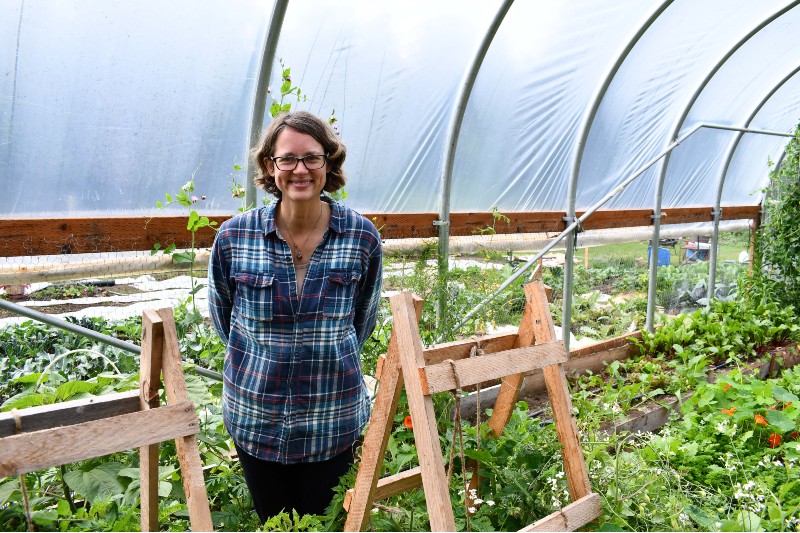
Seldovia is 25 miles away from the popular fishing town of Homer on the Kenai Peninsula. It’s only accessible by plane or boat. The year-round population is 277, but the seasonal population ranges from 1,000 to 2,000 during the summer tourism season.
“When COVID hit, it was scary here in Seldovia,” Rosanna said. “There was a shortage of food coming in. My neighbor said I should sell my garden produce, so I did. I couldn’t sell it fast enough, so that’s when I decided to expand my garden and help feed my community.”
A Seasonal High Tunnel
The demand for produce was so high that Rosanna decided to start a Community Supported Agriculture venture. In addition to the CSA, she sells produce at the Seldovia farmers market, the local grocery store, and restaurants.
“The second we can’t fly, and we can’t boat, we think ‘where are we going to get our food?’ We have to grow it,” she said.
Fortunately, Rosanna was already one step ahead in her CSA plans. She installed a seasonal high tunnel in 2019 with assistance from the USDA’s Natural Resources Conservation Service.
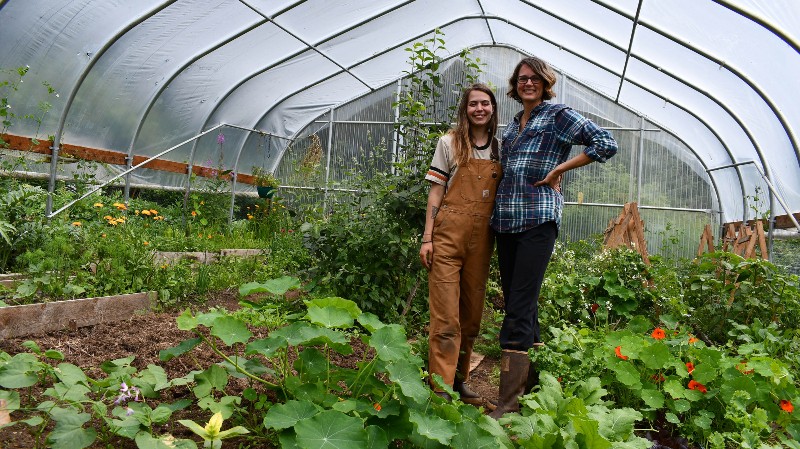
The high tunnel provides a controlled environment that protects crops from cold temperatures and wind, so it extends the growing season for many crops and allows warmer season crops, like cucumbers and tomatoes, to grow in Alaska.
NRCS covered a portion of the cost for the high tunnel though the Environmental Quality Incentives Program, which made it a reasonable financial venture for Rosanna. As part of her high tunnel contract with NRCS, she is also managing her soil nutrients to maximize soil health on the farm.
“The high tunnel was life-changing for me, for my soul and my health,” Rosanna said. “I was super ill, so it was healing for me to be in there with the soil and the plants and to make things grow. It had a healing effect."
Expanding the Garden
Rosanna expanded her operation in 2020 to add more garden beds. She now farms on a quarter acre, and plans to install a second seasonal high tunnel, which will further increase production.
Her farm partner, Callie Denham, has been instrumental in the growth of Rossana's Garden. They grow 20 to 30 different varieties of food including fruits, vegetables, herbs, flowers and chickens.
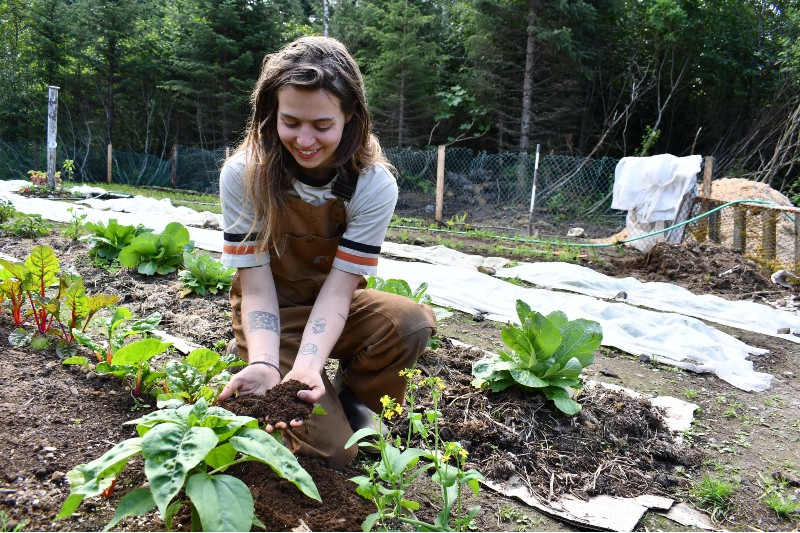
“We expanded the garden area and built new soil rows, and we are doing intensive growing with more plants using less space," said Callie. “We depend so much on the outside world, but we are figuring out that we can grow food right here that tastes good and that is more affordable, and we can feed people right here in our community.”
A Passion for Growing
Rosanna's passion for growing food stems from her family's history. Her grandmother was a homesteader in Trapper Creek, Alaska, and was an avid gardener. She even authored a gardening and food column for the Anchorage Daily News in the 1950s. Like her grandmother, Rosanna also has a vision for growing local food in Alaska.
“I want to be an incubator for other communities to learn how to farm, especially those off the road system,” Rosanna said. “We want to set the example for an off-road farm that is sustainable and economical."
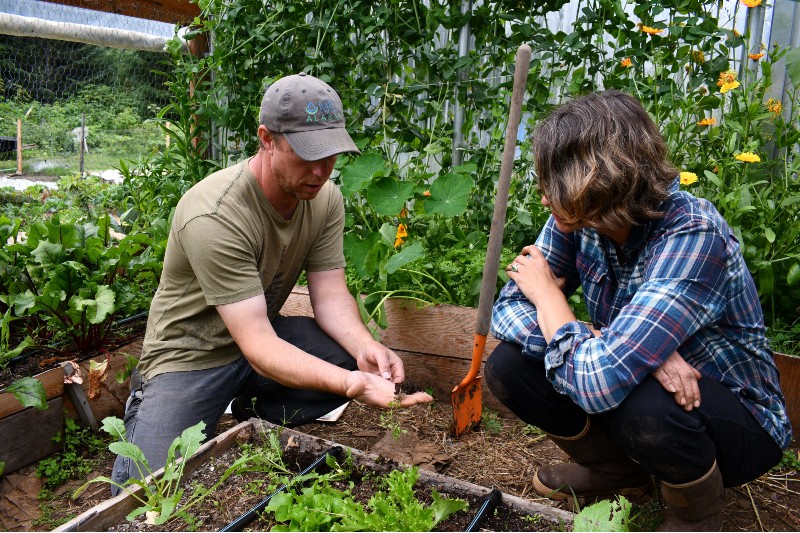
The town is situated on a north-facing slope, so it’s colder, darker and wetter compared to the adjacent town of Homer, which gets more sunlight and has more farms. Traditionally, Homer is known as a farming community and Seldovia as a fishing village.
"You can’t always do it the way your elders did because everything is different now," she added. "We can’t be afraid of the new way. You don’t need a huge field, a plow and chemicals. Everything you need you already have. You just need to put it together."
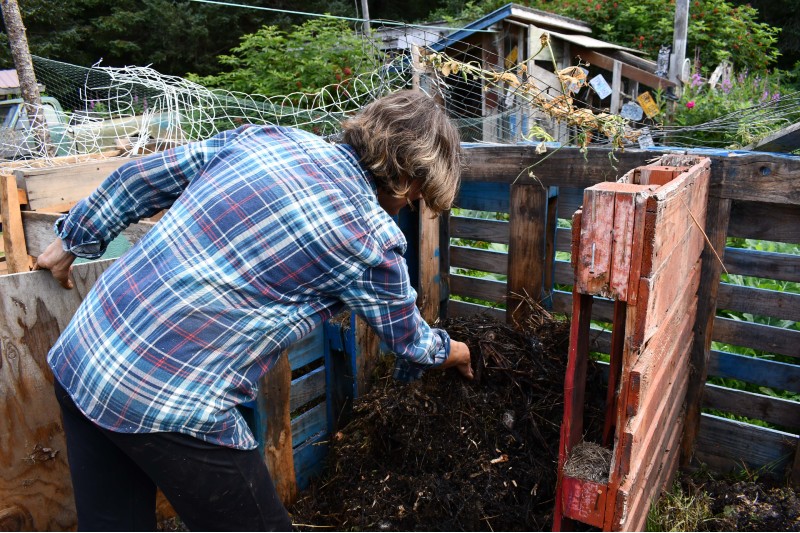
More Information
Each Friday visit local farms, ranches, forests, and resource areas through our Fridays on the Farm stories. Meet farmers, producers and landowners who are working to improve their operations with USDA programs.
USDA offers a variety of risk management, disaster assistance, loan, and conservation programs to help producers weather ups and downs in the market and recover from natural disasters as well as invest in improvements to their operations. Learn about additional programs.
For more information about USDA programs and services, contact your local USDA service center.
Tracy Robillard is the Public Affairs Specialist for NRCS in Alaska.


